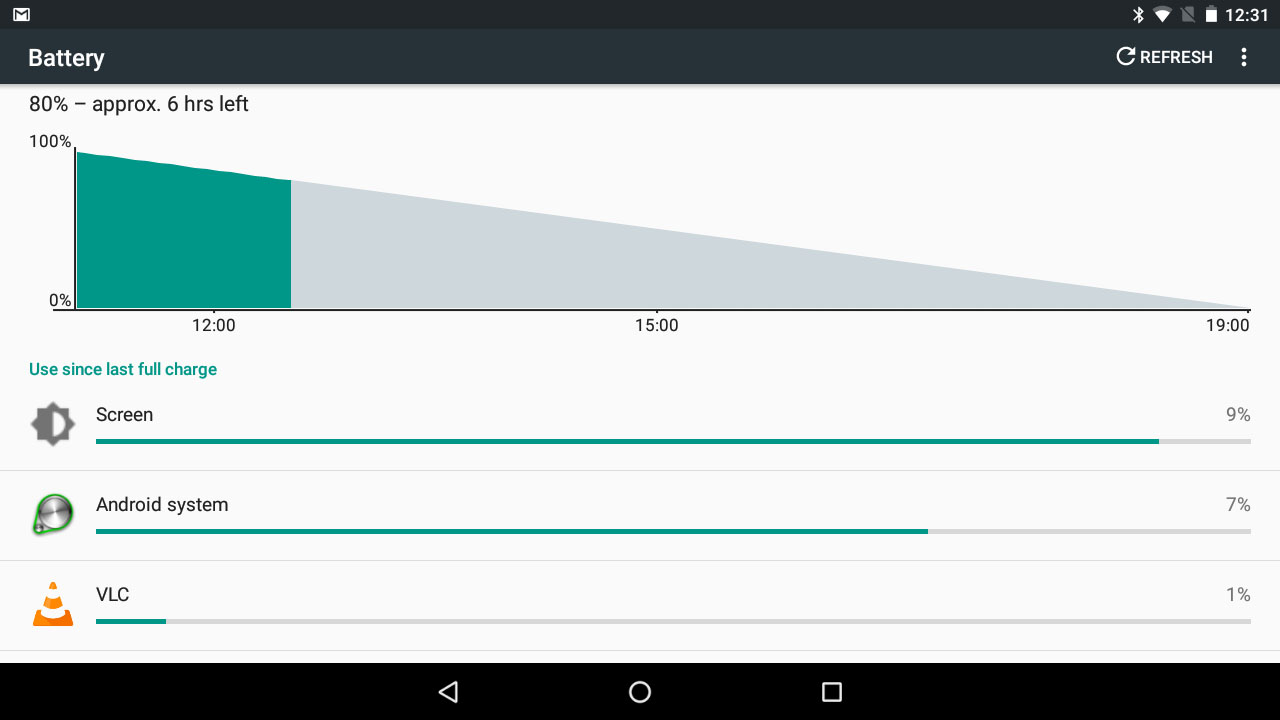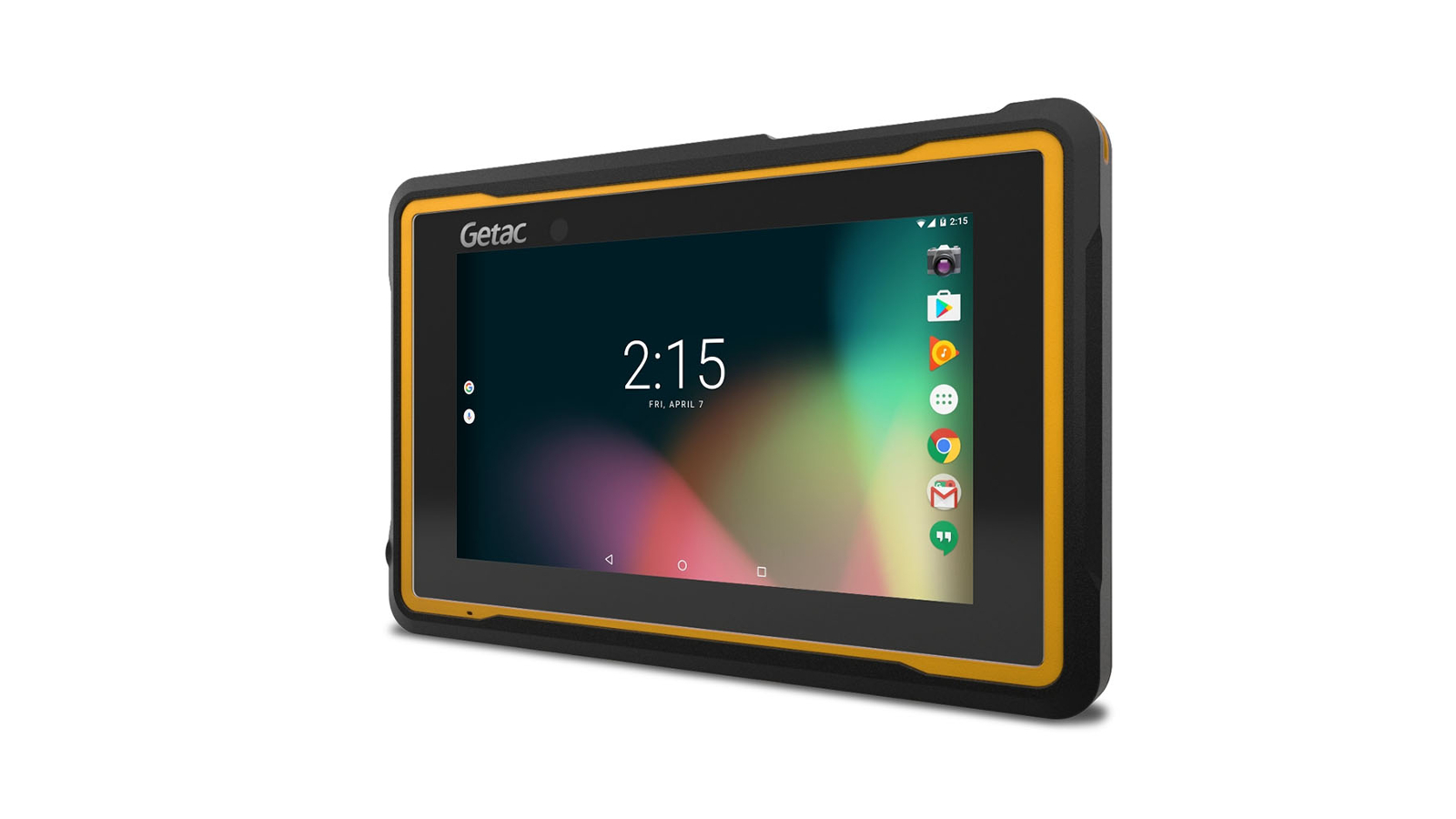Why you can trust TechRadar
Here is the Getac ZX70 configuration sent to TechRadar Pro for review:
CPU: Intel Atom x5-Z8350 quad-core 1.44GHz/1.92GHz
Graphics: Intel HD Graphics 400
RAM: 2GB LPDDR3 RAM
Screen: 7-inch IPS TFT LCD 1280 x 720 resolution
Storage: 32GB eMMC memory
Ports: 1 x USB 2.0, 1 x microSD, 1 x microSIM, headphone jack, Pogo/JAE docking connector
Connectivity: 802.11n Wi-Fi; Bluetooth 4.0
Camera: 8MP rear, FHD webcam front
Weight: 780g
Size: 218 x 142 x 27mm (W x D x H)
Warranty: 3-years
Battery: 31.9Whr/8.4Ah
Specifications
In understanding a product like the Getac ZX70, it’s important to consider that the inside and outside represent two separate engineering exercises.
Where the outside is battle-hardened against adversity, the inside is not far removed from what you might expect from a typical notebook PC.
Inside, this tablet runs with an Intel Atom x5-Z8350 CPU clocked at 1.44GHz, with burst up to 1.92GHz. Here it is paired with 2GB of LPDDR3 RAM, expandable to 4GB, and depending on the model you get 32GB or 64GB of eMMC flash storage.
You can also extend the capacity through both the microSD card slot and the USB port, making the storage capacity effectively unlimited.
The review model came with 32GB storage, of which 21GB was left for the user after the Android OS and pre-installed apps had taken their share of space.
Whereas the core components of this tablet are the same as a pure notebook, many of the optional extras aren’t subsystems that you’d normally find on an Android slate.
For example, most Android phones and tablets do have GPS, but the ZX70 has a high-resolution chip like those which DJI uses on its drones. The accuracy of this can be further enhanced with an external antenna connection, as can the WWAN capability.
Sign up to the TechRadar Pro newsletter to get all the top news, opinion, features and guidance your business needs to succeed!

The review model also included 4G LTE connectivity and a laser scanner for collecting barcodes.
There is no HDMI out provided, though the optional docking station adds this feature.
The ZX70 came with Android 5.0 Lollipop pre-installed, but automatically elevated it to the ranks of Android Marshmallow 6.0.1.
That’s two rungs below the current Android 8.0 Oreo flavor, but it’s recent enough to ensure that most applications are happy to install and run. As Android experiences go, the ZX70 is workmanlike but unremarkable.
Except for a few special apps to access features, like one for the high-resolution GPS, it’s almost stock Google from the launcher to the standard app suite.
Performance
Running GeekBench 4 and AnTuTu benchmarks revealed that Intel’s Atom CPU wasn’t the best choice for delivering raw oomph in terms of system performance. Scoring just 61,109 on AntuTu’s test, that’s 66% of what the Nvidia K1 Shield can achieve, and marginally less than Lenovo’s recent P2 phone.
GeekBench 4 single-core hit 948 and the multi-core result was 2,530, neither of which is going to worry those companies pitching the fastest Android hardware.

Accepting that the ZX70 wasn’t built to be a mobile gaming platform, we still feel it should have more grunt than the Atom provides.
The Intel Atom may well have also been a contributory factor in Getac including a massive 8400mAh battery. That’s 25% or more capacity than many Android tablets and it helps give the ZX70 a decent operating lifespan.

Performing the TechRadar battery test (playing a 90-minute video on full brightness from local storage), the battery dropped from 100% to only 80%. That would give the ZX80 a video playback life of close to 8 hours, and the ability to perform less challenging tasks for around 13-15 hours.
While video playback isn’t a typical usage pattern for this device, it aptly demonstrates that depending on workload the ZX70 should be able to go a few days between charges if used wisely.
Occasional bumps along the road
One minor weakness of this design is the 7-inch IPS LumiBond capacitive multi-touch display. The 1280 x 720 resolution isn’t great, and while it might be readable in even bright sunlight, compared with the display on a Shield K1 or iPad mini, it looks small and under-saturated.
For daylight viewing some compromises are acceptable, but the resolution should have been higher.
Sadly the cameras, front and rear, are in the realms of what budget phone users experienced at least three (or more) years ago. The ‘better’ rear camera is just 8 megapixels, and can only capture video in a maximum resolution of just 720p.
A better camera quality isn’t a necessity here, but surely a sensor that can do 1080p video isn’t excessive?
But of all the features that disappointed, the one that really stood out was Getac’s decision to use a proprietary charger.
Most Android tablets are charged using either microUSB or Type-C, allowing the sharing of them between devices. These are also the connection technologies used by portable batteries and portable solar arrays.
Because of the unique charger, anyone taking this tablet away from civilization won’t be able to recharge it unless they’ve got access to mains voltage.
EU laws don’t allow phone makers to use proprietary power connectors, and the ZX70 reminds us of exactly why that’s the case.
Mark is an expert on 3D printers, drones and phones. He also covers storage, including SSDs, NAS drives and portable hard drives. He started writing in 1986 and has contributed to MicroMart, PC Format, 3D World, among others.

